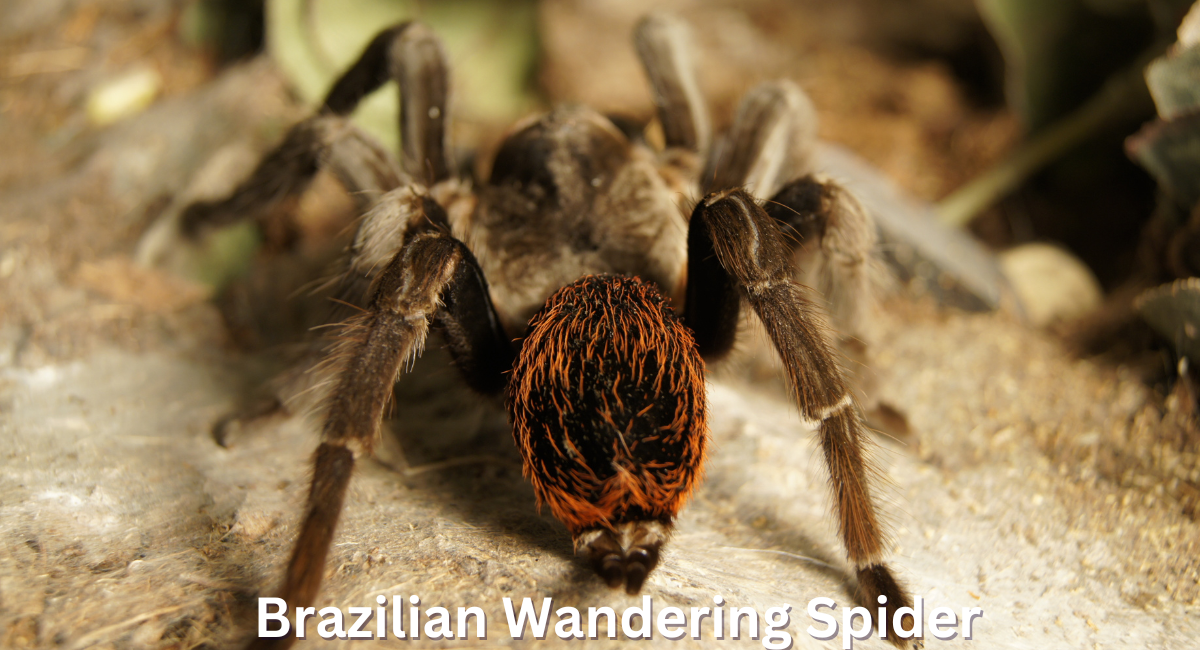The Chinese Bird Spider, scientifically known as Haplopelma schmidti, is an awe-inspiring tarantula species that thrives in the dense forests of China. As one of the largest spider species globally, it has garnered significant interest from both researchers and spider enthusiasts. Its remarkable size, often reaching up to 10 inches in leg span, combined with its distinctive coloration, makes it a standout among arachnids. Beyond its impressive appearance, the Chinese Bird Spider plays a crucial role in its ecosystem, serving as both predator and prey. Understanding its habitat, which is primarily characterized by humid, forested areas, is vital for appreciating how this species interacts with its environment and contributes to ecological balance.
The behavior of the Chinese Bird Spider further underscores its importance in the animal kingdom. Known for its burrowing habits, this tarantula constructs elaborate silk-lined burrows, providing shelter and a hunting ground for capturing prey. Its nocturnal nature allows it to hunt during the night, primarily feeding on insects and small animals. However, the Chinese Bird Spider faces threats from habitat destruction and the pet trade, leading to concerns about its conservation status. Awareness and protection efforts are essential to ensure the survival of this fascinating creature, often regarded as one of the largest spiders in the world. This highlights the need for continued research and habitat preservation to maintain the delicate balance of its ecosystem.
Habitat and Distribution
The Chinese Bird Spider primarily inhabits the dense, humid forests of southern China, particularly in regions like Yunnan and Guangxi. These spiders are typically found in burrows or under foliage, where they can seek shelter from predators and the elements. The natural environment of the Chinese Bird Spider includes a combination of tropical and subtropical climates, which provide the humidity and warmth necessary for their survival. As this species prefers undisturbed habitats, deforestation and habitat loss pose significant threats to their populations.
The presence of the Chinese Bird Spider is crucial in maintaining the ecological balance of its habitat. As both predator and prey, these spiders play a vital role in controlling insect populations and serving as a food source for larger animals. Unfortunately, habitat destruction from agricultural expansion, urbanization, and logging has led to a decline in suitable environments for these spiders, making their conservation increasingly important.
Physical Characteristics
The Chinese Bird Spider is notable for its impressive size and distinctive features. Adults can reach up to 6 inches in leg span, making them one of the largest spider species globally. Their bodies are covered in thick, dark brown to black hairs, which not only provide camouflage but also serve a sensory function, helping the spider detect vibrations in its environment. The large, robust legs enable the spider to move swiftly through its forest habitat, while their powerful fangs can subdue prey efficiently. This capability to hunt effectively parallels the traits seen in the deadliest snakes in the world, which also possess adaptations that allow them to capture and immobilize their prey.
A distinguishing characteristic of the Chinese Bird Spider is its coloration. While most tarantulas exhibit dull hues, the Chinese Bird Spider displays a beautiful array of colors, including hints of red and yellow, especially on the legs and carapace. This vibrant appearance, combined with their formidable size, makes them a visually stunning species that captivates spider enthusiasts and researchers alike. Much like the allure of the the striking colors and large size of the Chinese Bird Spider highlight the diversity of adaptations in nature, drawing attention to the importance of preserving such fascinating species.
Diet and Hunting Behavior
The Chinese Bird Spider is primarily carnivorous, preying on various insects and small vertebrates. Their diet may include crickets, grasshoppers, and even small rodents or lizards, showcasing their adaptability as hunters. These spiders employ a sit-and-wait strategy, remaining concealed in their burrows or under foliage until a potential prey item approaches. Once within range, they strike quickly, using their venomous fangs to immobilize their prey before dragging it back to their burrow for consumption. Similar to the hunting tactics of the Sydney Funnel-Web Spider, the Chinese Bird Spider demonstrates remarkable precision and speed in capturing its food.
Their hunting behavior is not only fascinating but also highlights their role in the ecosystem as predators. By controlling insect populations, the Chinese Bird Spider helps maintain a balanced environment, preventing any single species from becoming overly dominant. This ecological balance is critical, as seen in the habitats of the where various arachnid species coexist and contribute to the overall health of their ecosystem. Understanding the dietary habits of the Chinese Bird Spider is crucial for conservation efforts, as preserving their prey species is essential for their continued survival.
Behavior and Social Structure
The Chinese Bird Spider exhibits interesting behavioral traits, particularly regarding its territorial nature. These spiders are generally solitary creatures, preferring to establish their burrows away from others to avoid competition. However, they may exhibit social behaviors during the mating season, where males will venture out in search of females. Mating can be a dangerous endeavor for males, as females may exhibit cannibalistic tendencies, consuming their partners after mating. Similarly, the is known for its unique mating behavior, where the female may consume the male after copulation, highlighting the risks involved in reproduction among certain spider species.
In terms of locomotion, the Chinese Bird Spider is known for its quick movements and agility. Despite their large size, they can move surprisingly fast when hunting or escaping threats. Their defensive behaviors include rearing up and displaying their fangs, as well as using their urticating hairs to deter potential predators. This combination of behavioral adaptations ensures their survival in the wild. Comparatively, the Black Widow Spider employs its own strategies for defense, using its venomous bite as a deterrent against larger threats. These behavioral traits reflect the diverse survival strategies within the spider world, illustrating how different species adapt to their environments.
Lifespan and Reproduction
The lifespan of the Chinese Bird Spider varies between sexes, with females typically living longer than males. Females can live up to 20 years or more, while males usually have a lifespan of 5 to 10 years. This significant difference in lifespan is common among many tarantula species and is attributed to their reproductive strategies. Males often expend considerable energy searching for mates, leading to a shorter life expectancy. In comparison, the Brown Recluse Spider has a much shorter lifespan, typically living for about 1 to 2 years, which highlights the diversity in survival strategies among spider species.
Reproduction occurs once the male locates a female’s burrow. After mating, the female lays a clutch of eggs, which she protects fiercely until they hatch. The young spiders, or spiderlings, remain with the mother for a short period before dispersing to establish their burrows. This nurturing behavior is relatively uncommon among spiders, making the Chinese Bird Spider’s reproductive practices particularly interesting to researchers. Unlike the which does not exhibit parental care, the Chinese Bird Spider showcases unique and complex behaviors that contribute to the survival of its young. Understanding these differences not only enriches our knowledge of spider behavior but also underscores the ecological roles these creatures play in their environments.
Conservation Status
Despite being a unique species, the conservation status of the Chinese Bird Spider is a growing concern. Habitat destruction due to deforestation and human encroachment has led to significant declines in their population. While the Chinese Bird Spider is not currently classified as endangered, ongoing habitat loss could result in the species becoming threatened in the future. Additionally, as a member of the same family as the Brazilian Wandering Spider, it faces similar threats from habitat degradation. Conservation efforts aimed at preserving their natural habitats are essential to ensure the survival of this remarkable spider.
In addition to habitat preservation, raising public awareness about the importance of the Chinese Bird Spider is crucial. Education initiatives can help dispel myths and fears surrounding these misunderstood creatures, fostering a greater appreciation for their ecological role. By highlighting the significance of the Chinese Bird Spider in maintaining the balance of ecosystems, we can encourage conservation efforts. Protecting them and their habitats is crucial. Understanding their relationship with other species, such as the birds they interact with, offers valuable insights. This can reveal the broader ecological impacts of spider populations and emphasizes the importance of their conservation.
Fascination and Cultural Significance
Care in Captivity
For those interested in keeping a Chinese Bird Spider as a pet, proper care is essential to ensure their well-being. Their enclosures should mimic their natural habitat, providing ample substrate for burrowing, hiding spots, and appropriate humidity levels. A temperature range of 75 to 85 degrees Fahrenheit is ideal for their health. It’s crucial to research and understand their specific care needs to provide an optimal environment that supports their natural behaviors. This includes creating a secure habitat that not only meets their physical requirements but also encourages their instinctual habits, such as hiding and burrowing, which are vital for their psychological well-being.
Feeding captive Chinese Bird Spiders involves offering a varied diet of live insects, including crickets and roaches. Care should be taken not to overfeed, as obesity can lead to health problems. Monitoring their behavior and health regularly is vital, allowing owners to address any potential issues before they become serious. Additionally, providing the right size and type of prey helps in mimicking their natural hunting behaviors, which is essential for their overall health. Proper care not only benefits the spider but also enhances the owner’s experience as they observe the unique behaviors of this remarkable species, fostering a deeper appreciation for the Chinese Bird Spider and its place within the ecosystem.
Research and Scientific Interest
The Chinese Bird Spider has garnered significant interest from scientists and researchers studying arachnology. Their unique adaptations, behaviors, and venom properties make them an intriguing subject for scientific inquiry. Research on the ecological roles of spiders provides insights into pest management and biodiversity conservation. It highlights the spider’s importance in controlling insect populations. This also helps maintain the balance of their habitat.
By studying the Chinese Bird Spider, scientists can understand the intricate relationships within ecosystems. These spiders contribute to overall environmental health by regulating insect populations.
Additionally, studies on the venom of the Chinese Bird Spider have potential medical applications. Understanding the composition and effects of their venom could lead to advancements in pain management. Researchers are exploring the possibility of isolating specific compounds within the venom. These compounds may have analgesic or anti-inflammatory properties, paving the way for new treatments.
As research continues, the significance of the Chinese Bird Spider extends beyond its ecological role. It contributes to scientific advancements in both arachnology and medicine. This highlights the importance of conserving this remarkable species. It holds the key to unlocking potential benefits for human health and well-being.
Conclusion
In summary, the Chinese Bird Spider is a remarkable species that plays a vital role in its ecosystem. From its impressive size and striking appearance to its unique behaviors and ecological significance, this spider deserves attention. Habitat loss threatens their populations, making conservation efforts vital. Raising awareness and promoting initiatives is increasingly important.
By fostering a greater appreciation for the Chinese Bird Spider and its contributions to biodiversity, we can help ensure its survival. Understanding and protecting this fascinating arachnid is key. It helps maintain the balance of forest ecosystems and supports ongoing scientific research.



